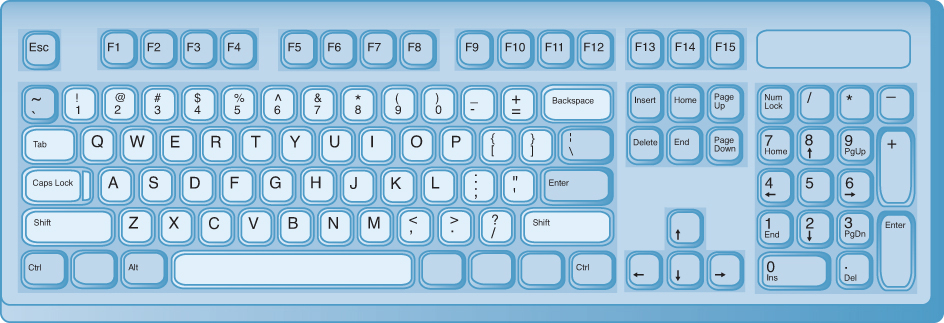Keyboard is a set of keys on a typewriter or on an input device used to enter information into a computer. Most keyboards in English-speaking countries use a layout known as QWERTY, because the letters Q, W, E, R, T, and Y appear in succession near the upper left-hand corner of the keyboard. Christopher Latham Sholes, one of the inventors of the earliest practical typewriter, helped develop this layout. See Typewriter (History) .

Computer keyboards have more keys than typewriter keyboards. Most of these keys perform special tasks. Four arrow keys, for example, enable the computer user to move an electronic marker called the cursor or insertion point up, down, left, or right on the computer screen. The cursor indicates where the next character typed will appear. A few keyboards have a built-in trackball, touchpad, or other device that can be used to control the insertion point. A computer keyboard also has numerical keys grouped in a keypad to help users enter numbers quickly. Ten or more function keys perform different actions, depending on the program that is running. A user can hold down such special keys as command, control, or alt, and then press other keys to give the computer certain commands.
Computer users can reprogram the keys on many keyboards to produce other characters or to perform special functions. Some keyboards include buttons for adjusting the volume of the computer’s speaker, for playing an audio compact disc, or for launching programs. Most computer keyboards have several status lights that indicate certain conditions. For example, a caps lock light indicates that as letters are typed they will appear as capital letters.
Many ergonomic computer keyboards have key arrangements that are considered to be better-suited to the human hand than the QWERTY layout. The keys on ergonomic keyboards are often divided into two or three groups, with each group mounted at a different angle to the bottom of the keyboard.
See also Computer (Input devices) ; Touch screen .
